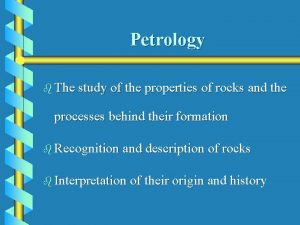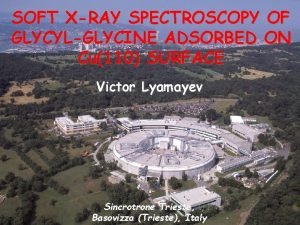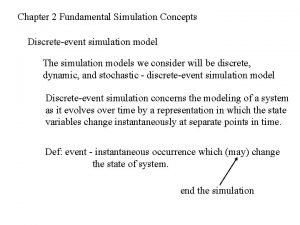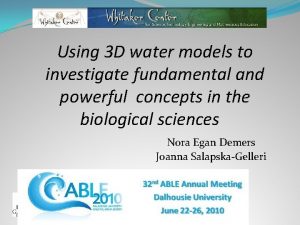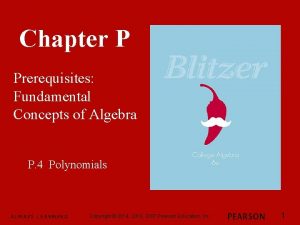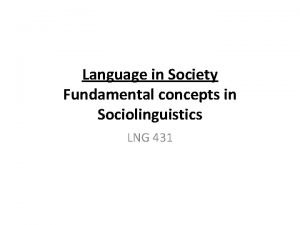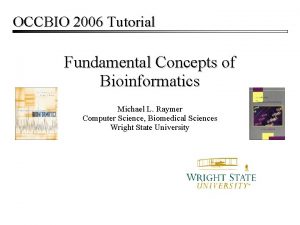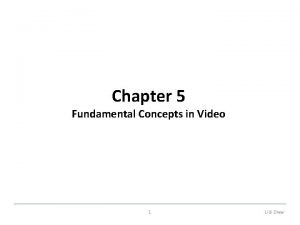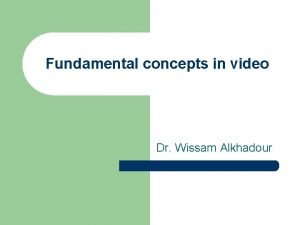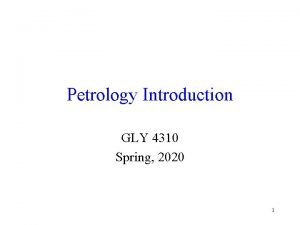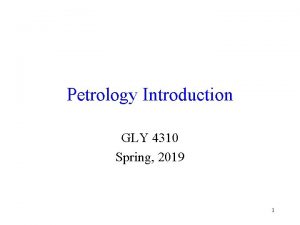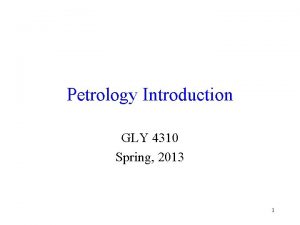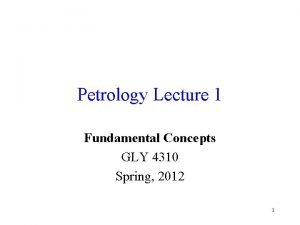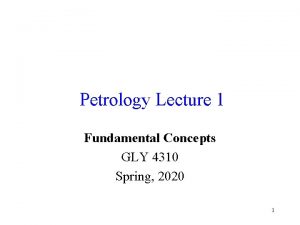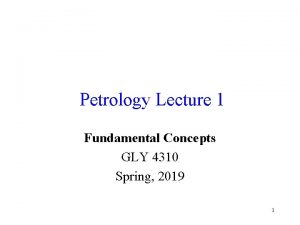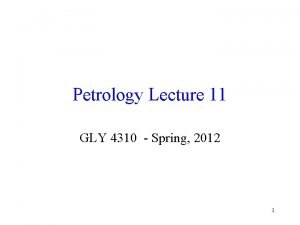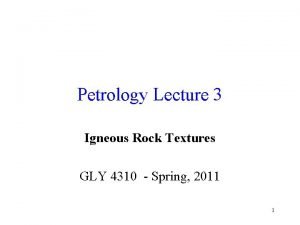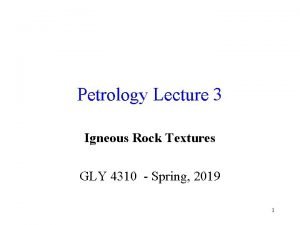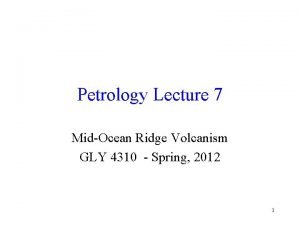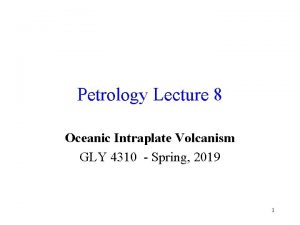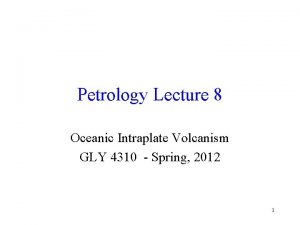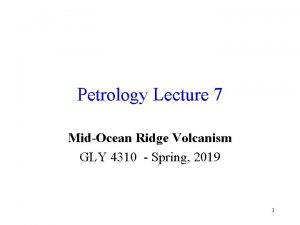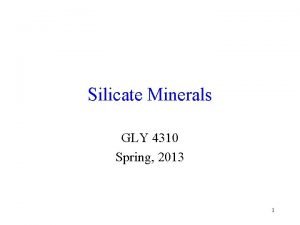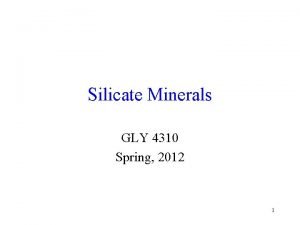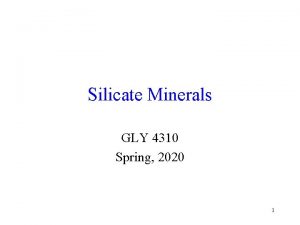Petrology Lecture 1 Fundamental Concepts GLY 4310 Spring




















- Slides: 20

Petrology Lecture 1 Fundamental Concepts GLY 4310 Spring, 2013 1

Major Subdivisions of the Earth 2

Seismic Wave Velocities versus Depth • Variation in P and S wave velocities with depth. • Compositional subdivisions of the Earth are on the left • Rheological subdivisions on the right • After Kearey and Vine (1990), Global Tectonics. © Blackwell Scientific. Oxford. 3

Origin of the Solar System • • • Solar Nebula Rotational Flattening Gravitational Collapse Initiation of nuclear reactions Planetesimal formation 4

Processes within the Disc • Strong gradients • Escape of volatiles • Retention of refractory compounds 5

Composition of the Earth • Element Weight Percent Atom percent • • • 46. 60 26. 72 8. 13 5. 00 3. 63 2. 83 2. 59 2. 09 0. 44 0. 10 O Si Al Fe Ca Na K Mg Ti H P 62. 55 21. 22┐ 6. 47│ 1. 92│ 1. 94├ 2. 64│ 1. 42│ 1. 84┘ Volume percent ≈ 94 ≈ 6 6

Goldschmidt Classification • Lithophile: Literally, "stone-loving". Elements which incorporate into silicate phases, generally of low density. • Chalcophile: Literally, "copper-loving". However, since copper often forms sulfide phases, this really means elements which form sulfide phases, typically of intermediate density. • Siderophile: Literally, "Iron-loving". Elements, typically iron and alloying elements, which form a dense sulfide phase. • Atomphile: Light, gaseous elements. Some may have been retained during initial accretion, but most were lost to space. These substances, which form the atmosphere and oceans, probably accumulated slowly later in the earth's history. 7

Density Calculations • Whole earth density = 5. 52 g/cm 3 • Crustal rocks is around 3. 0 g/cm 3 • Infer that there is a region of much higher density within the earth 8

Abundance of Elements 9

Additional Constraints • Laboratory studies of seismic wave velocities • Natural samples of the mantle 10

Meteorites • Pieces of extra-terrestrial solid material that survive the plunge through the earth's atmosphere • Geological concentration of meteorites 11

Meteorite Categories • • Irons Stones Stony-irons Collection problems 12

Gradients • Both temperature and pressure increase with increasing depth below the surface § Geothermal gradient § Geobarometric gradient 13

Heat Loss • • Radiation Conduction Convection Advection 14

Importance of Heat Loss • Processes controlled by heat loss: § Metamorphism § Melting § Crystaliization 15

Geotherms Figure 1. 11 Estimates of oceanic (blue curves) and continental shield (red curves) geotherms to a depth of 300 km. The thickness of mature (> 100 Ma) oceanic lithosphere is hatched and that of continental shield lithosphere is yellow. Data from Green and Falloon ((1998), Green & Ringwood (1963), Jaupart and Mareschal (1999), Mc. Kenzie et al. (2005 and personal communication), Ringwood (1966), Rudnick and Nyblade (1999), Turcotte and Schubert (2002). 16

Pressure at the Base of the Crust • Putting units into the equation, we get: • ~ 30 MPa/km • » 1 GPa at base of average crust 17

Units of Pressure • Traditionally, pressure was expressed in units of bars or kilobars • 1 bar = 105 Pa (0. 1 MPa), so this is about 300 bars or 0. 3 kbars/km • For the upper mantle, ρ ≈3. 35 g/cm 3. This gives a pressure gradient of about 35 Mpa/km • Remember that these numbers are good only near the earth’s surface • Core: ρ increases more rapidly since alloy more dense 18

Geobarometric Gradient • P increases = ρgh • Nearly linear through mantle • Figure shows the PREM (Preliminary Reference Earth Model) of Dziewonski and Anderson, which is a better reference to consult for pressures at depth within the earth 19

Tectonics and Magma Generation • • • 5. Back-arc Basins 1. Mid-ocean Ridges 2. Intracontinental Rifts • 6. Ocean Island Basalts • 7. Miscellaneous Intra 3. Island Arcs Continental Activity 4. Active Continental § Kimberlites, Carbonatites, Margins Anorthosites. . . 20
 Petrology is the study of
Petrology is the study of Rg 4310/2018
Rg 4310/2018 15 isomers of mabcdef
15 isomers of mabcdef Gly
Gly Gly
Gly 01:640:244 lecture notes - lecture 15: plat, idah, farad
01:640:244 lecture notes - lecture 15: plat, idah, farad Spring summer fall winter and spring cast
Spring summer fall winter and spring cast Spring what months
Spring what months Four fundamental oop concepts
Four fundamental oop concepts Ssef price list
Ssef price list Fundamental simulation concepts
Fundamental simulation concepts Chapter p prerequisites
Chapter p prerequisites Fundamental and powerful concepts
Fundamental and powerful concepts Fundamental concept of managerial economics
Fundamental concept of managerial economics Chapter p prerequisites fundamental concepts of algebra
Chapter p prerequisites fundamental concepts of algebra Chapter p prerequisites fundamental concepts of algebra
Chapter p prerequisites fundamental concepts of algebra Equi marginal principle in managerial economics
Equi marginal principle in managerial economics Sociolinguistics concept
Sociolinguistics concept Occbio
Occbio Chapter p prerequisites fundamental concepts of algebra
Chapter p prerequisites fundamental concepts of algebra Fundamental concepts in video
Fundamental concepts in video
